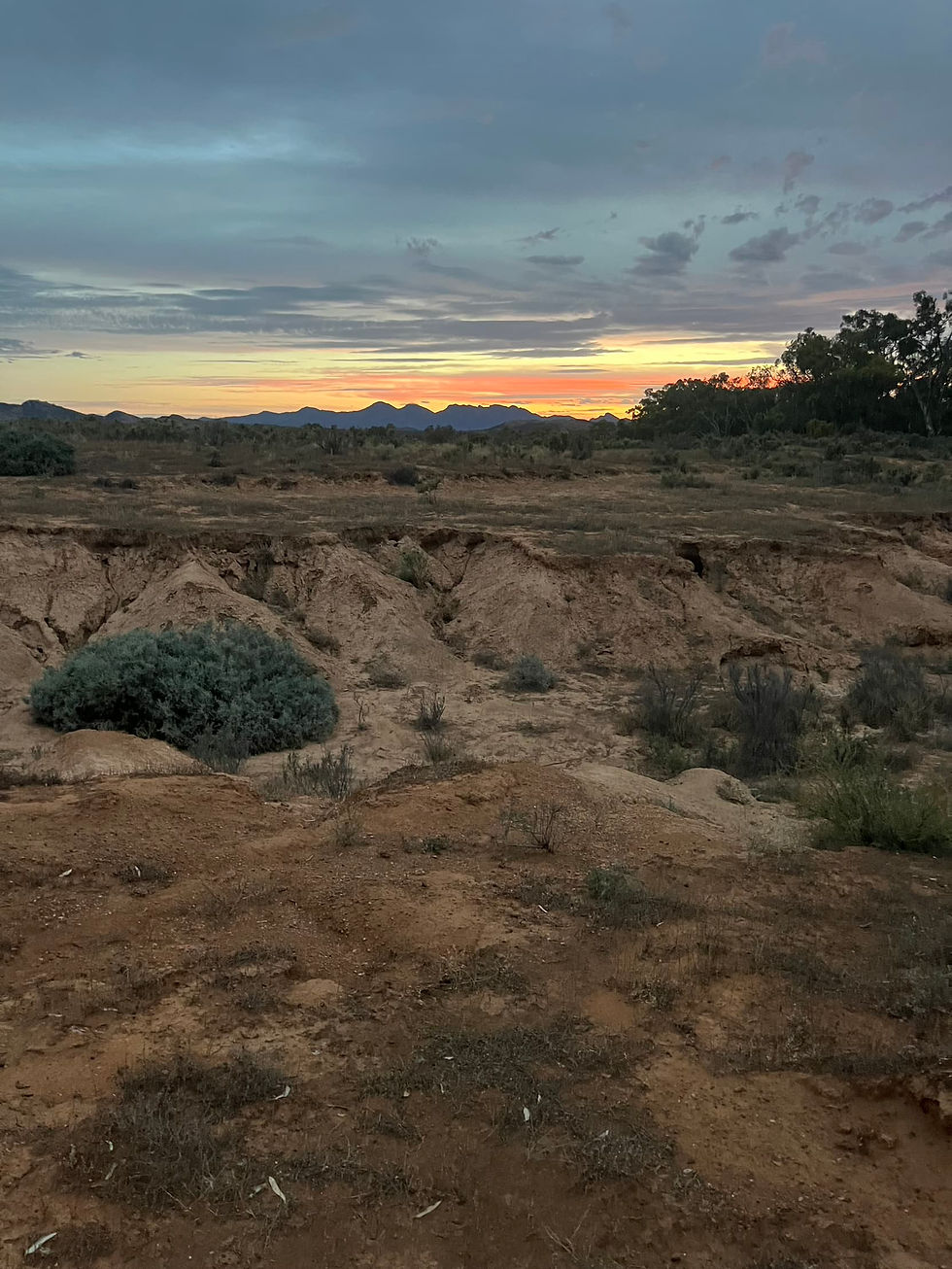On the steps of the yellow footed rock wallaby in South Australia
- delphinegargula
- Jul 8, 2024
- 2 min read
Early 2024, we decided to spend our Easter long weekend in the Ikara-Flinders Ranges National Park, with grand plans of hiking, camping in the outback and exploring the national park. We had no idea we were going to be spoiled with some amazing wildlife sightings!
Trezona Campground
We organised this trip last minute as our original plan was to spend Easter on Kangaroo Island (that's another story!). A few weeks before Easter, Trezona Campground was one of the few campgrounds that still had sites available in the Ikara-Flinders Ranges National Park, so we booked it for 2 nights.
The campground itself is quite small, but it has toilets and a rainwater tank. And most importantly, it is located in a fantastic location if you want to explore Brachina Gorge.

Brachina Gorge
Trezona campground is located on Brachina Gorge rd, about 7.5km East of the Flinders Ranges Way. However if you continue straight on Brachina Gorge rd towards Teamsters campground instead of turning right to Trezona, you may get rewarded with some rare sightings of yellow-footed rock wallabies.
Be warned however, the road will get flooded in wet weather and you may need to cross a few puddles, if not creeks, depending on water levels and the amount of rain there is or has been. Definitely prefer a high clearance or 4WD vehicle regardless of the weather if you want to reach the yellow footed rock wallabies' colony.

Yellow-footed rock wallabies
These wallabies are simply stunning. We only heard about them on our way to the Ikara-Flinders Ranges National Park and didn't expect to be fortunate enough to see some, but a combination of luck, poor weather and adventure spirit led us to Brachina Gorge in our not-so-appropriate rental car and we couldn't be more grateful for this!

The yellow-footed rock wallaby is considered vulnerable and is now almost exclusively found in South Australia, with very few colonies in NSW and QLD. These beauties live in rocky outcrops, jumping precisely from rock to rock at different heights, and will often seek shelter in caves. They tend to live in colonies of up to 100 individuals.

More information on yellow footed rock wallabies on https://www.australianwildlife.org/wildlife/yellow-footed-rock-wallaby/
How to spot a yellow-footed rock wallaby
To spot them, make sure you look for orange and yellow dots inside caves, or on rocks in the gorge. It may be worth stopping your car and going for a walk with binoculars to spot them. If it is rainy and your car allows it, it may be easier to spot them as they will most likely be sheltered inside caves. Look for their stunning yellow-orange zebra tail!

Comments